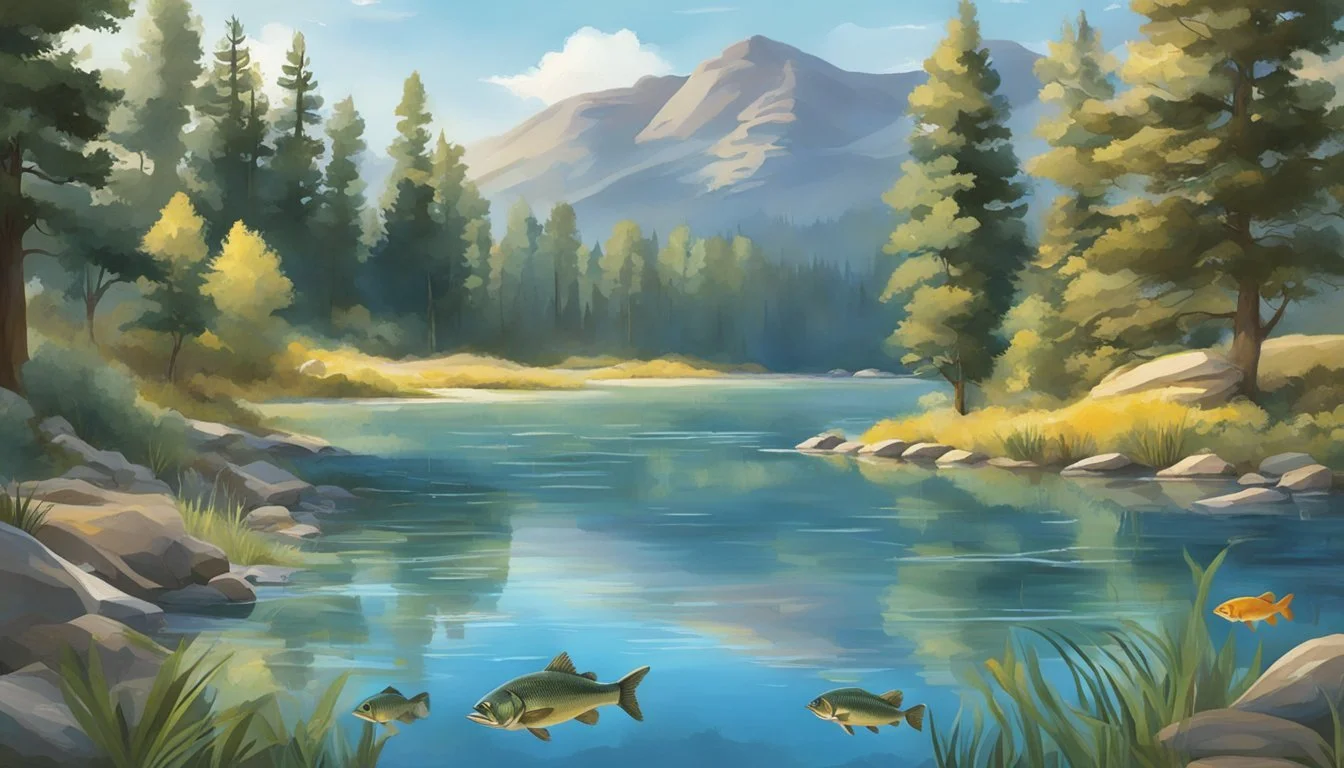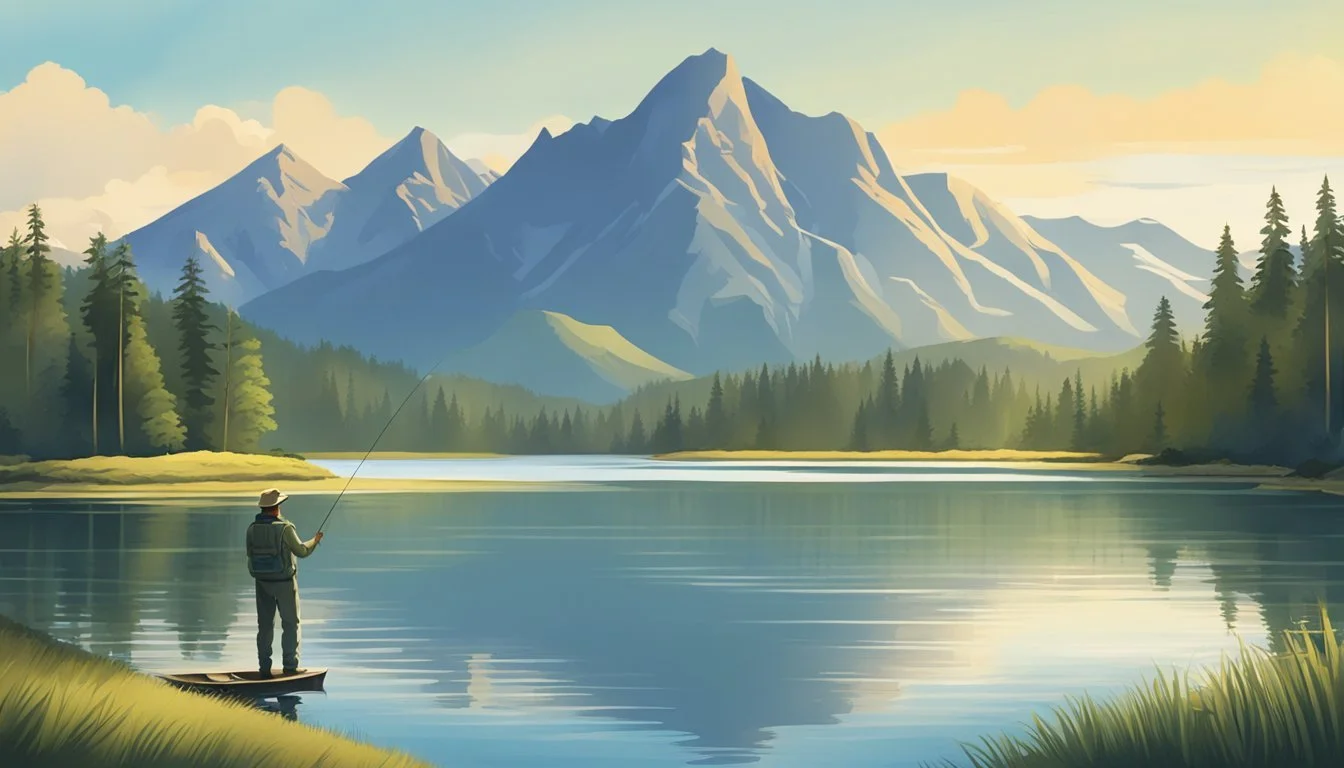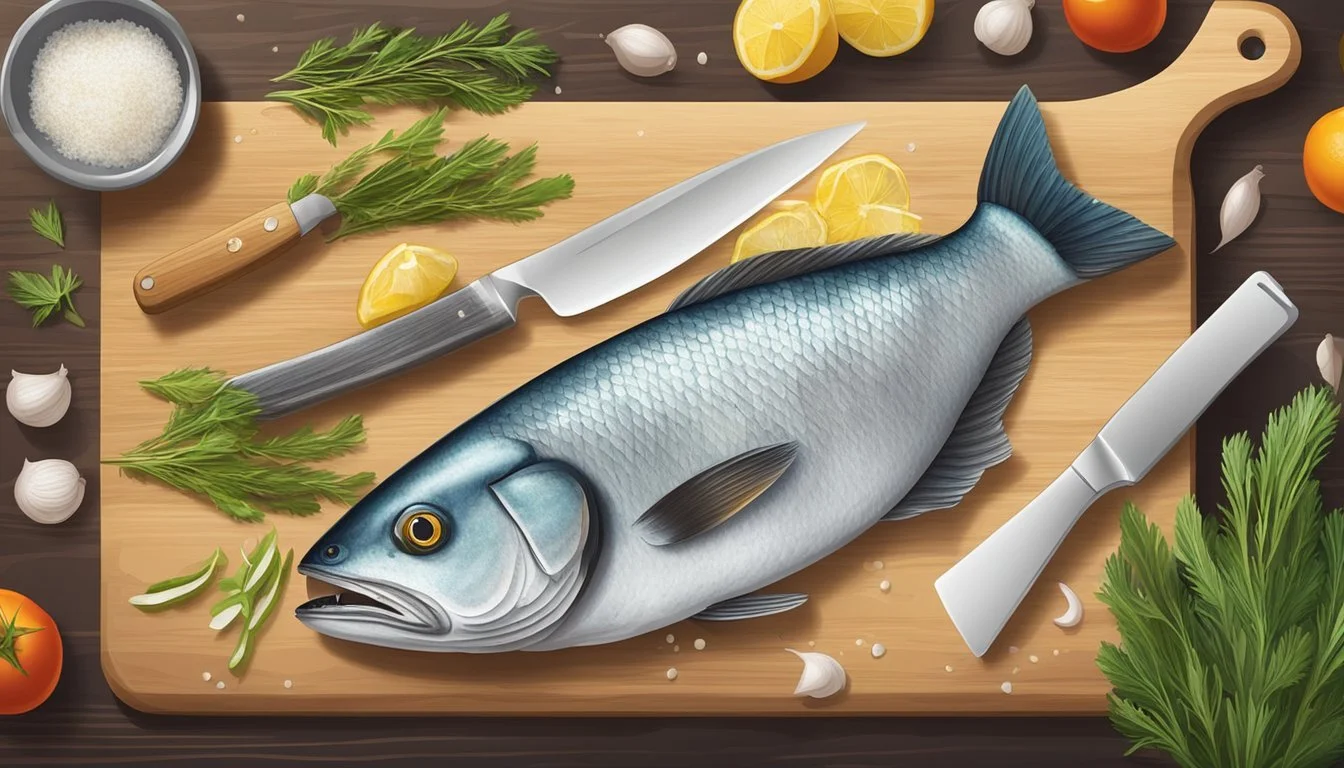Best Fish to Catch and Eat in Utah
Top Tasty Species for Anglers
Utah's diverse aquatic landscapes offer anglers an array of fishing opportunities. With over 1,000 fishable lakes and countless streams, the state is a prime spot for those looking to reel in a fresh catch suitable for dining. From the pristine, high-elevation lakes home to vibrant trout populations to the expansive waters of Lake Powell teeming with bass, Utah's fishing grounds provide both an exhilarating experience and the potential for a delicious meal.
As they explore the wide variety of fish (What wine goes well with fish?) species in Utah, anglers can ex
pect to encounter several that are not only a challenge to catch but also excellent to eat. Rainbow trout, cutthroat trout, brown trout, and brook trout are among the favorites in the mountain streams and lakes, renowned for their flavor and sport-fishing appeal. In deeper waters, lake trout and kokanee salmon are sought after for both their fighting spirit and their culinary value.
For those who prefer warm-water fishing, Utah does not disappoint. Bass species such as smallmouth and largemouth bass offer a robust fight and are a popular choice among fishing enthusiasts, both for sport and table fare. The state's waters also harbor channel catfish and walleye – fish known for their fine taste and the enhancement they bring to a variety of dishes. Utah truly stands out as a place where the fishing adventure culminates in a savory reward.
Understanding Utah's Freshwater Ecosystems
Utah's freshwater ecosystems are diverse, offering an array of fishing opportunities across lakes, reservoirs, rivers, and streams. They are pivotal in supporting both the environment and the recreational activities that they cater to.
Lakes and Reservoirs
Utah boasts a variety of freshwater lakes and reservoirs, which serve as prime spots for anglers. The freshwater lake environment is relatively stable, and larger bodies like Lake Powell and Bear Lake allow for a vast population of fish. These bodies of water typically house diverse species, offering both cold-water and warm-water fishing conditions.
Cold-water habitats are found in deeper lakes and are known for trout species such as cutthroat and rainbow trout.
Warm-water habitats in shallower reservoirs support bass, catfish, and walleye.
Fishing in these ecosystems is heavily influenced by the water temperature and food availability, affecting fish behavior and abundance.
Rivers and Streams
The rivers and streams of Utah present a dynamic environment that differs from the more stable lakes and reservoirs. The state's rivers, such as the Green River and the Provo River, along with countless mountain streams, offer excellent fishing opportunities that often focus on trout species.
Key factors in the river and stream ecosystems include:
Flow and oxygen levels: Swift currents keep the water oxygenated, which benefits trout and other game fish.
Insect populations: Plentiful insects serve as a food source, making fly-fishing particularly rewarding.
Anglers must pay attention to variations in water levels and clarity, which can dramatically affect the fishing experience. It is crucial to understand the seasonal patterns impacting these ecosystems while planning a fishing trip.
Popular Game Fish Species in Utah
The waters of Utah host numerous game fish species highly regarded by anglers for both sport and table fare. From the pristine high-altitude lakes hosting a variety of trout to the warmer southern reservoirs where bass and other species thrive, the state offers diverse fishing opportunities.
Trout Varieties
Cutthroat Trout: Native to Utah's streams and rivers, the Cutthroat is symbolic of the state's rich angling culture. The Bonneville Cutthroat, found in the Weber and Provo Rivers, can weigh between 2-4 pounds, with specimens tipping the scales at even higher weights.
Rainbow Trout: Often stocked for anglers, Rainbow Trout are recognized by their shimmering, colorful stripes. They are a preferred catch due to their fighting spirit and delicious taste.
Brown Trout: The elusive Brown Trout grow to impressive sizes in Utah's waters, presenting a challenge for experienced anglers keen on a dignified catch.
Brook Trout: Small but beautifully patterned, Brook Trout appeal to those seeking a scenic fishing experience in smaller streams and high-mountain lakes.
Tiger Trout: The Tiger Trout, a hybrid of Brown and Brook Trout, is a spectacular catch for its unique appearance and voracious appetite.
Lake Trout: Deep-water dwelling Lake Trout are targeted for their substantial size and hearty meat quality.
Bass Family
Largemouth Bass: These fish are a centerpiece for bass anglers, known for their aggressive strikes and energetic fights. They flourish in the warmer waters of Utah Lake among other locations.
Smallmouth Bass: Preferring clearer and cooler waters than their largemouth counterparts, Smallmouth Bass offer a robust challenge and are celebrated for their lean, flavorful meat.
Striped Bass: Known for their distinctive markings and schooling nature, Striped Bass can be found in large reservoirs such as Lake Powell, where they provide thrilling action for anglers.
Other Noteworthy Fish
Walleye: Prized for their firm white flesh, these fish are the darlings of culinary enthusiasts and are abundant in Utah Lake.
Kokanee Salmon: A landlocked version of the Pacific sockeye salmon, the Kokanee is known for its vibrant red spawning colors and is a popular target in lakes like Strawberry Reservoir.
Northern Pike: These predatory fish are noted for their size and are often pursued for the thrill of the hunt in waters where they've been introduced.
Yellow Perch: A smaller panfish famed for its flaky white meat, (What wine goes well with white meat?) the Yellow Perch provides an ample opportunity for family-friendly fishing outings.
Black Crappie: Another panfish, Black Crappie are targeted for their mild, sweet flavor and can be found in several of Utah's fisheries.
This snapshot of Utah's game fish diversity reveals a rich tapestry of angling opportunities. Whether for sport or the skillet, each species offers a unique experience for both local and visiting anglers.
Prime Fishing Locations in Utah
Utah offers a rich diversity of freshwater bodies, catering to anglers in search of the perfect catch. From northern to southern Utah, each region presents unique fishing opportunities ranging from large reservoirs teeming with species to pristine rivers nestled in scenic landscapes.
Northern Utah Gems
In the northern part of the state, Bear Lake stands out as a prime fishing location, known for its turquoise waters and the phenomenon known as the "Cisco Disco." Anglers here can target native Cutthroat Trout and the unique Bear Lake Whitefish. Close by, Pineview Reservoir is renowned for its trophy-sized Tiger Muskies and crappie. Just outside of Logan, Logan River offers excellent fly-fishing opportunities for Brown Trout and Cutthroat in a serene setting.
Strawberry Reservoir: A haven for trout fishing located in the Uinta National Forest.
Weber River: Prized for robust populations of Brown and Rainbow Trout.
Southern Utah Hotspots
Southern Utah's warm climate and varied landscapes provide a different fishing experience. Lake Powell's vast expanse holds Striped Bass, Smallmouth Bass, and Walleye, with the backdrop of its iconic red rock formations. Fish Lake, set in the high alpine territory of the Southern Utah plateaus, is one of Utah’s largest natural mountain lakes, offering Splake, Rainbow Trout, and Mackinaw. Further down, the Colorado River and Green River courses through stunning canyons, teeming with catfish and bass, among others.
Jordanelle Reservoir: Near Jordanelle State Park, this reservoir supports a population of trout, smallmouth bass, and perch.
Sevier River: Flows through Southern Utah providing a consistent fishery for Brown, Rainbow, and Cutthroat Trout.
Eastern Utah's Hidden Treasures
Eastern Utah is home to Flaming Gorge Reservoir, a sprawling water body that crosses into Wyoming. This reservoir is famed for its trophy Lake Trout and Kokanee Salmon. Along the Duchesne River, anglers can find a more secluded experience, targeting Brown, Rainbow, and Cutthroat Trout. Green River, just below Flaming Gorge Dam, is celebrated among fly-fishing enthusiasts for its world-class clear water fishing, large Trout, and unmatched scenic views.
Uinta Mountains: Streams and lakes here abound with Brook Trout and Arctic Grayling.
Currant Creek Reservoir: A less crowded environment for Rainbow and Cutthroat Trout amidst beautiful mountain vistas.
Fishing Techniques and Tackle
Selecting the right fishing techniques and tackle is pivotal for success in catching and enjoying Utah's diverse fish species. Appropriate gear varies by the type of fishing, season, and whether the angler seeks a hearty meal or a challenging catch.
Bait and Lures
Anglers should consider the target species when choosing bait and lures. Traditional bait like worms work well for rainbow trout and panfish, while artificial lures such as in-line spinners and 2-inch curly tailed jigs are also effective.
Live Bait: Often used for catfish and panfish, including worms and minnows.
Artificial Lures: Spinners and soft plastics are versatile for various species.
Fly Fishing Essentials
For fly fishing enthusiasts, having a well-equipped tackle box is key. It should include:
Flies: A variety of flies to match the hatch of local insect life, crucial for trout.
Gear: A balanced fly rod and reel combo matched with the appropriate weight fly line.
Ice Fishing Gear
Ice fishing requires specialized gear to brave the cold and reel in species like trout and perch.
Rods: Shorter, with less action due to reduced fish movement in the cold.
Tackle: Compact jigs and live bait like mealworms are standard.
IMIZE_ALT="A selection of fly fishing essentials, including a variety of flies in a box, reels, and rods." />
Regulations and Conservation
Utah offers a diverse and productive fishing environment, but with this opportunity comes the responsibility of following regulations designed to ensure the sustainability of the state's fish populations. These regulations help maintain a balance between the enjoyment of angling and the health of aquatic ecosystems.
Fishing Season and Limits: Most waterbodies in Utah have a year-round fishing season, from January 1 to December 31. However, anglers should be aware that specific fish limits are in place to prevent overfishing. These limits can vary by species and location, so consulting the current Utah Fishing Guidebook is essential for compliance.
Special Conservation Programs: The Utah Cutthroat Slam is an example of a conservation-focused initiative. This program not only promotes angling but also raises funds for native trout conservation. Proceeds contribute to protecting vital habitats and supporting the management of Utah's cutthroat trout populations.
Impact of Environmental Factors: Changes in water levels due to dams or droughts can significantly affect fish environments and hatches. When these events occur, emergency regulation changes might be implemented to protect the fish populations. The state's evolving management strategy aims to minimize the need for such changes by proactively addressing environmental stressors.
Conservation Through Regulation: By adhering to these regulations, anglers contribute to the conservation of Utah’s fisheries. Compliance ensures that future generations can enjoy the same quality of fishing that is available today, maintaining a harmonious relationship with the environment and its inhabitants.
Best Times and Seasons for Fishing
Utah offers diverse fishing experiences throughout the year. For optimal fishing, anglers should consider the seasons which influence fish activity.
Cutthroat Trout:
Best Season: June to September
Time of Day: Early morning and late afternoon
Note: Located in mountain streams and lakes, they put up a moderate fight.
Rainbow Trout and Brown Trout:
Peak Season: Spring and fall offer cooler water temperatures that trout prefer.
Tiger Muskie:
Optimal Timing: Late spring to early fall, with these large fish known for their challenging fight.
Largemouth and Smallmouth Bass:
Suggested Season: Summer is ideal when the water temperatures are warmer.
Size & Weight: These fish vary in size, with largemouth generally being larger.
Walleye:
Best Fishing Times: Nighttime or during overcast days.
Season: Late spring and early fall.
Catfish:
Favored Season: Summer nights are perfect for these bottom-dwellers.
Characteristic: Known for their size and the noteworthy fight they give.
Species Best Season Best Time of Day Size & Fight Characteristics Cutthroat Trout Jun - Sep Dawn/Dusk Moderate size and fight Rainbow Trout Spring/Fall - Varied sizes, active fight Brown Trout Spring/Fall - Smaller, feisty fighters Tiger Muskie Late Spring - Fall - Large, strong fighters Bass Summer - Size varies, determined fight Walleye Late Spring/Fall Night/Overcast Elusive with mild fight Catfish Summer Night Large, strong fight
Anglers should always check current regulations and conditions, which can include emergency changes due to environmental factors like drought or construction. Utah's year-round fishing season in most waterbodies, from January 1 to December 31, allows flexibility for planning trips.
Preparing Your Catch for the Table
Once an angler has successfully reeled in a fish, the process of preparing it for the table begins. For those fishing in Utah, the variety of fish from the Colorado River to the lakes of Wyoming offers an array of panfish, trout, and bass to choose from.
Cleaning the Fish:
Scaling: For fish with scales, a scaler or the back of a knife can be used to remove them.
Gutting: Make an incision from the anus to the lower jaw and remove the entrails, taking care to eliminate any strong odor.
Rinsing: Clean the cavity and exterior with cold water to remove blood and residue.
Fish Size and Preparation:
Small Panfish: Filleting might not be necessary; these can be cooked whole.
Larger Specimens: Like trout from the Colorado River, are often filleted or steaked.
Seasoning and Marination:
Use ingredients that complement the natural flavors.
Cornmeal or a light batter can provide a delicious crust for pan-frying.
For a natural flavor enhancer, consider using minced nightcrawlers or small minnows in stuffing mixtures for larger fish.
It's important to note that fresh fish has a delicate flavor that can be easily overshadowed; thus, seasoning should be thoughtful and precise. Chefs suggest avoiding overly powerful spices that can mask the taste of the fish.
Cooking Methods:
Pan-Frying: Ideal for smaller, thinner fillets or panfish.
Grilling/Smoking: Best for imparting a delicate smokiness to thicker cuts.
Baking: Suits almost all types of fish, often in foil to retain moisture.
For cooks in Utah and regions beyond, proper preparation of fish ensures a meal that is not only delicious and fulfilling but also a celebration of the fishing journey from the dynamic waters of the West.
Planning Your Fishing Trip in Utah
When planning a fishing trip in Utah, one must consider not just the fishing locations but also where to stay and what other activities can complement the experience. Whether one chooses the serene backdrop of the Uinta Mountains or the proximity to urban comforts near Salt Lake City, Utah provides a variety of options.
Accommodations and Camping
For those seeking a rustic experience, camping is available throughout Utah's various state parks and national forest areas. One may opt for established campsites near popular fishing spots, with amenities such as restrooms and fire pits, or for more sequestered backcountry sites for a closer connection with nature.
State Parks: Equipped with modern facilities, ideal for families and first-time campers.
National Forests: Offer a more primitive camping experience, often closer to remote fishing areas.
Campers should secure permits if required, especially in areas like the Uinta Mountains, known for their natural beauty and fishing opportunities.
Family Activities and Hiking Trails
For family members who may not be as interested in fishing, Utah's diverse landscape offers an array of hiking opportunities. Trails vary from easy walks to challenging hikes, many featuring breathtaking views and wildlife encounters.
Uinta Mountains: Boasts over 1,000 miles of trails, suitable for all ages and experience levels.
Salt Lake City Area: Provides urban parks with trails that are perfect for a family outing.
To maximize one's trip, researching trails and parks near the selected fishing location is advisable, ensuring everyone has a memorable experience in Utah's great outdoors.






